Mini Travel Guide: Australia’s Northern Territory
Looking for a travel guide to Australia’s Northern Territory? Want to see more of Australia than the Sydney Opera House? You’re in the right place! I brought in a local to share her best Northern Australia travel tips – what to do, where to go, and how to travel Northern Australia cheaply, safely, and respectfully!
G’day. I’m Anne, an Australian veterinarian and
blogger. I grew up on the East Coast of Australia (think pristine beaches and blue skies) but have always had an affinity with the Northern Territory.
The red dirt in the centre, the tropical weather in the North, and the wildlife all over make this a very special destination. Plus it just feels like this is a relatively untamed expanse where one can have a genuine adventure.
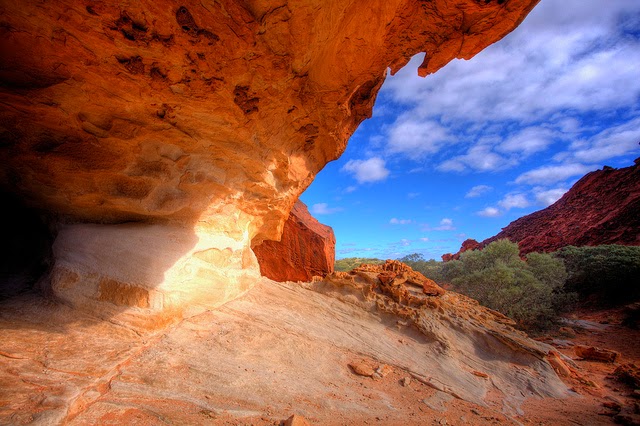
Must go in Australia’s Northern Territory
This park contains Uluru (sometimes referred to as Ayers Rock) and Kata Tjuta (also known as The Olgas). You can’t stay within the park, so will need to just outside at the Ayer’s Rock Resort (about ten minutes’ drive away).
The Resort is also ten minutes from Yulara Airport. Buses operate between the airport and resort. From the Resort it’s easy to join a tour to Uluru or Kata Tjuta. If you have to pick one, I recommend Uluru.
No photo can do it justice. This monolith is over 9km (5.8 miles) in diameter and 348 metres high. I’ve seen it rain on one side and be sunny on the other. It changes colour constantly through the day.
Sunrise and sunset are the best times for viewing. Depending on the season, coach tours will leave between 4 and 5 am so you won’t miss anything. Bring a jumper (sweater) as it can be unexpectedly cool in the morning (the temperature can drop to near freezing in winter).
The World Heritage Listed Kakadu National Park is massive – covering 20,000 square kilometres. And it’s a wildlife haven. Take
a wetland cruise to get up close to the wildlife, including crocodiles.


Must eat in Australia’s Northern Territory
Crocodile and kangaroo meat is promoted heavily to the tourist market, but often sold in a fast-food format (crocodile burgers, for example). At the end of the day it looks and tastes similar to other types of meat, and won’t appeal to vegetarians.
A more interesting oral adventure can be had sampling bush tucker – traditional foods gathered by indigenous Australians, using knowledge passed down from the elders. Many resorts and parks offer guided bush tucker tours, like this one in Katherine.
Locally grown tropical fruit is abundant at all of the weekend markets in the Top End, such as the
Parap Market in Darwin, relatively cheaply. If you’ve never tried rambutans or dragon fruit, don’t miss the opportunity.
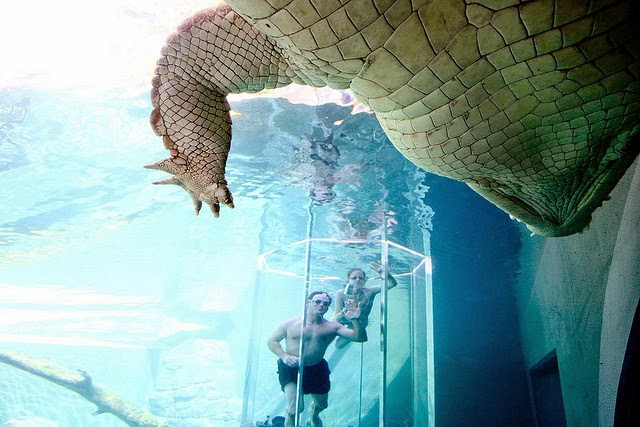
Must do in Australia’s Northern Territory
Despite its intimidating name and the irony that you will need to sign a waiver stating you are “of sound mind” as you enter a contraption called “the Cage of Death”, this experience at Crocosaurus Cove in Mitchell Street Darwin is life-affirming. Essentially you are lowered into a crocodile pen inside a croc-proof viewing cage.
For fifteen minutes you can observe the underwater action of these magnificent creatures – or even watch them being fed. I’ve worked with crocodiles during my training, but this encounter allowed me to see aspects of them I’d never see otherwise – like the fact that they can be so active underwater without making a ripple on the surface.
You can do it alone, but I recommend going in with a friend. All you need are swimmers and potentially a waterproof camera – or for a bit extra you can get the staff photographer to take photos so you can just focus on the experience.
In peak periods, you might need to book a few weeks in advance. Exhilarating.
Uluru (sometimes referred to as Ayer’s Rock) is usually photographed from one side, giving the impression that it is a large but essentially flat rock. In fact, it is vast, irregular in shape and over 9km around.
The base walk is fantastic, but the heat can be grueling. A more comfortable option is to hire a bike and ride around the base – you can still stop to check out waterholes, and the bikes won’t put off the local wildlife – but you can chase the shade.
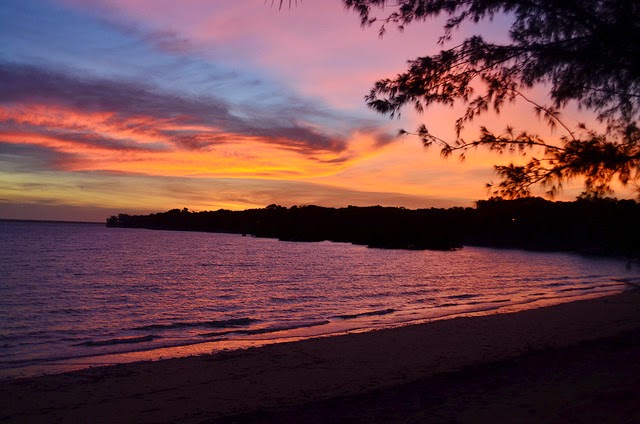
Cultural Tips for Traveling in Australia’s Northern Territory
Respect indigenous culture
Ask permission before taking photos of indigenous people, activities or artwork (including rock carvings). There are cultural reasons why photography may be unacceptable in these circumstances. Some areas are signposted as sacred and should not be photographed. If in doubt, ask a local.
Avoid climbing Uluru
Many overseas visitors want to climb the rock because they can, but this is insensitive to the local Indigenous people who request that visitors do not climb (not least because people die from heat stroke in the process). You’ll learn more about the rock and the local Anangu people from guided tours around the base.
Watch the wildlife
The Territory is home to hundreds of wildlife species. Unfortunately, thousands of reptiles, mammals and birds are killed by cars and trucks. It’s not uncommon for kangaroo and wallaby joeys to be orphaned when their mothers are hit by cars. They tend to be “dazzled” and disoriented in the headlights.
Care should be taken especially when driving at night. If you do hit a mammal and it is safe to do so, check the pouch for young and transport the animal to the closest veterinarian. Do not handle bats as these can carry Lyssavirus (this causes a rabies-like virus).
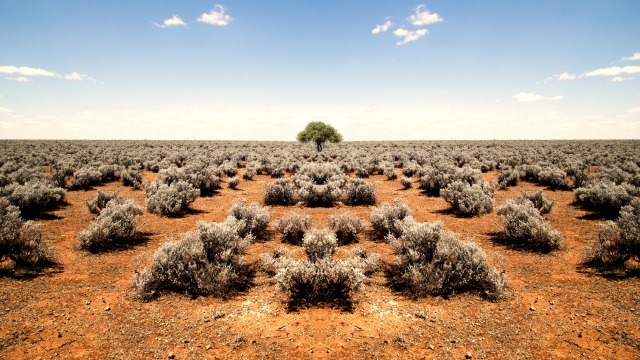
Cheap travel tips for Australia’s Northern Territory
The Territory is vast. The distance between Darwin (at the Top End) and Alice Springs (the Red Centre) is around 1500km – that’s a solid two-day drive.
Jetstar is a budget airline that offers cheap flights within the Territory as well as to other parts of Australia. The benefit of flying is that it leaves more time.
If you must drive, sharing a hire-car and fuel costs is very economical. You will need a vehicle with air-conditioning – even in the winter months. Take plenty of water with you and let someone know your travel plans.
Public transport in many of the towns is non-existent so can’t be relied on, and hitchhiking is not recommended.
I know there are heaps of Aussie readers – what are the other can’t-misses of the Northern Territory or other Australian travel tips?
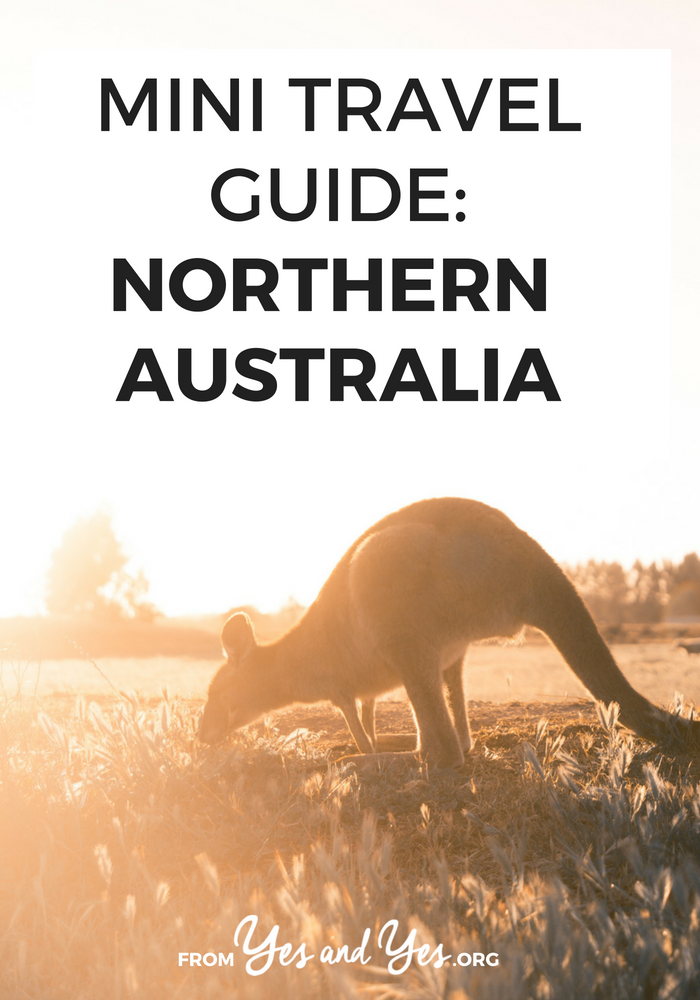









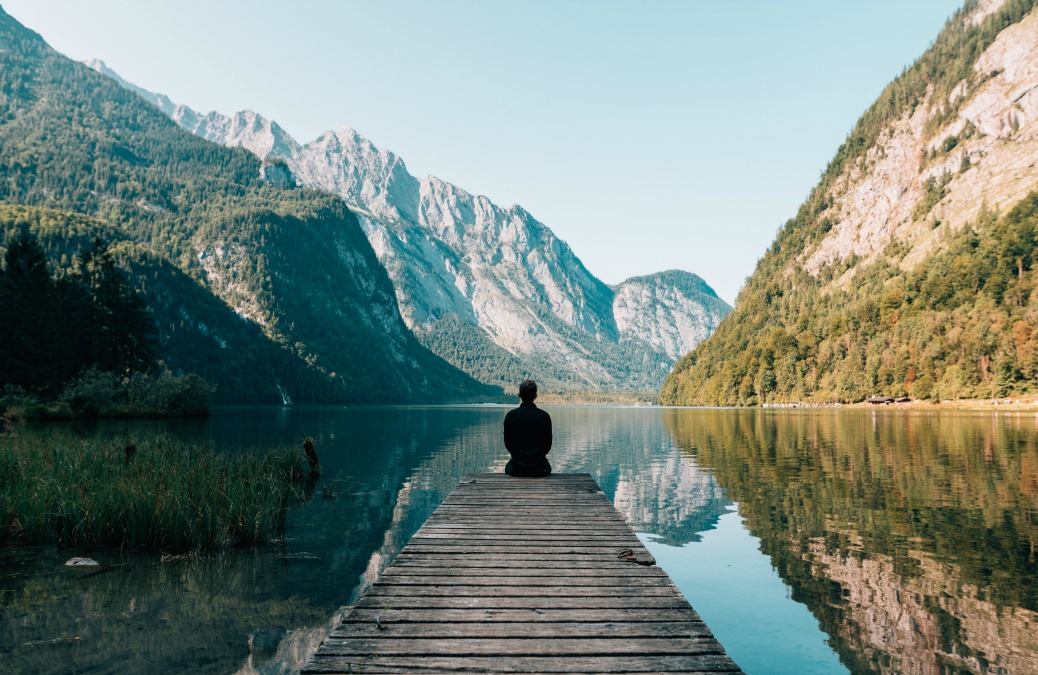

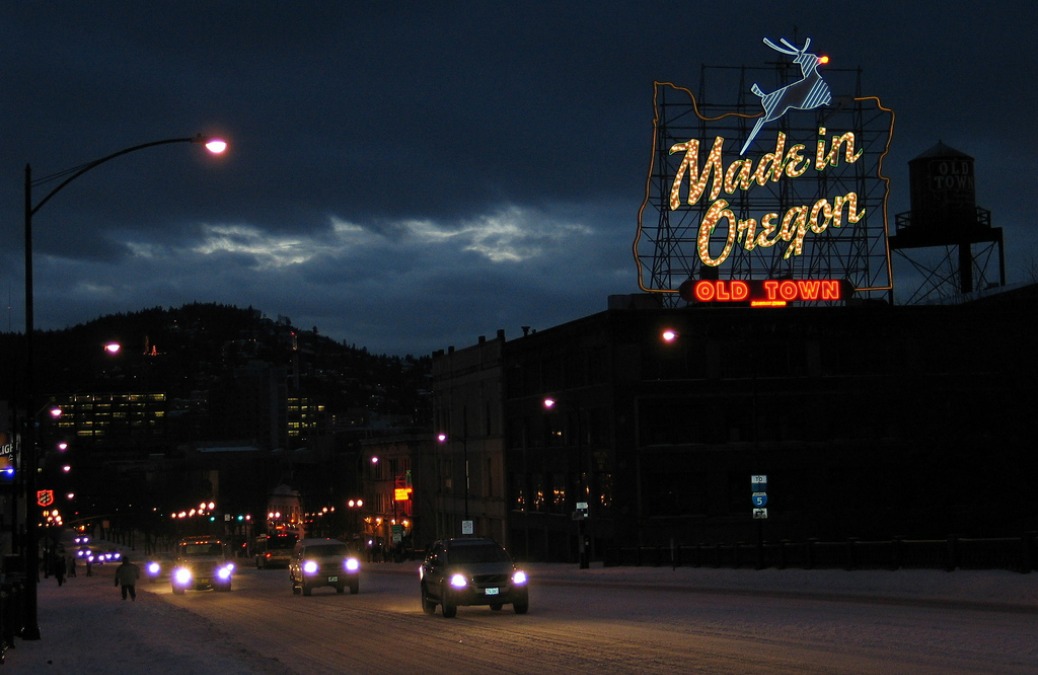






I live in Western Australia, and I know a few people who have hitchhiked around the country. That said, it’s probably riskier to get stranded in NT.
Also, Sarah, it looks like there’s a typo, because it’s 1500 km between Darwin and Alice Springs.
Just came to post the same thing re typo! I think people sometimes forget how big Australia is 😉
Fixed! Thanks for the head’s up!
I did the whole “live in a van and pick fruit” thing during my working holiday in Oz. A few of my favorite parts of my road trip:
-Litchfield National Park is a bit more accessible than Kakadu and just south of Darwin. Camped by some great waterfalls here and loved the monsoon forests.
-Katherine is a bit south of that, and Katherine Gorge is absolutely stunning. You can rent a canoe and paddle through the gorges, looking for (benign) freshwater crocs sunning on the rocks.
-Camps Australia Wide is kind of the bible for free camping in Oz. The closest listed site to Uluru-basically a wide spot in the road-is just below a big red sand dune, front which you can see Uluru and Kata Tjuta silhouetted against the starriest sky you’ve ever seen.
My favourite place to visit in the Red Centre is Kings Canyon in the Watarrka National Park. Its approximately 5 hours from Alice or can be done as part of a round trip including Uluru. The walk around and through the canyon is stunning.
There are also some great places to stop off at in the West MacDonanld Ranges on the drive between Alice and Uluru. Including some nice spots for a swim. Ellery Creek Big Hole is one and Glen Helen Gorge. Both peaceful and well worth a visit. There’s accommodation at Glen Helen and a campsite at Ellery Creek as well.
It’s probably also worth mentioning that if you do actually hit a fully grown kangaroo (which are often over 6′ and pure muscle) with your car (especially if it’s not a 4WD with a bull bar), you’re not going to be in good condition either. The kangaroo will probably die, but if it comes through your windscreen that’s not great news for passengers. Keep eyes peeled if driving during dawn, dusk or at night especially!
Beautiful country..I have to visit there someday